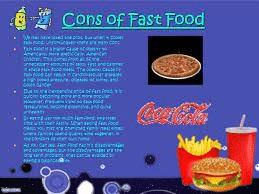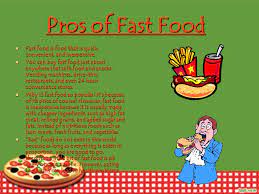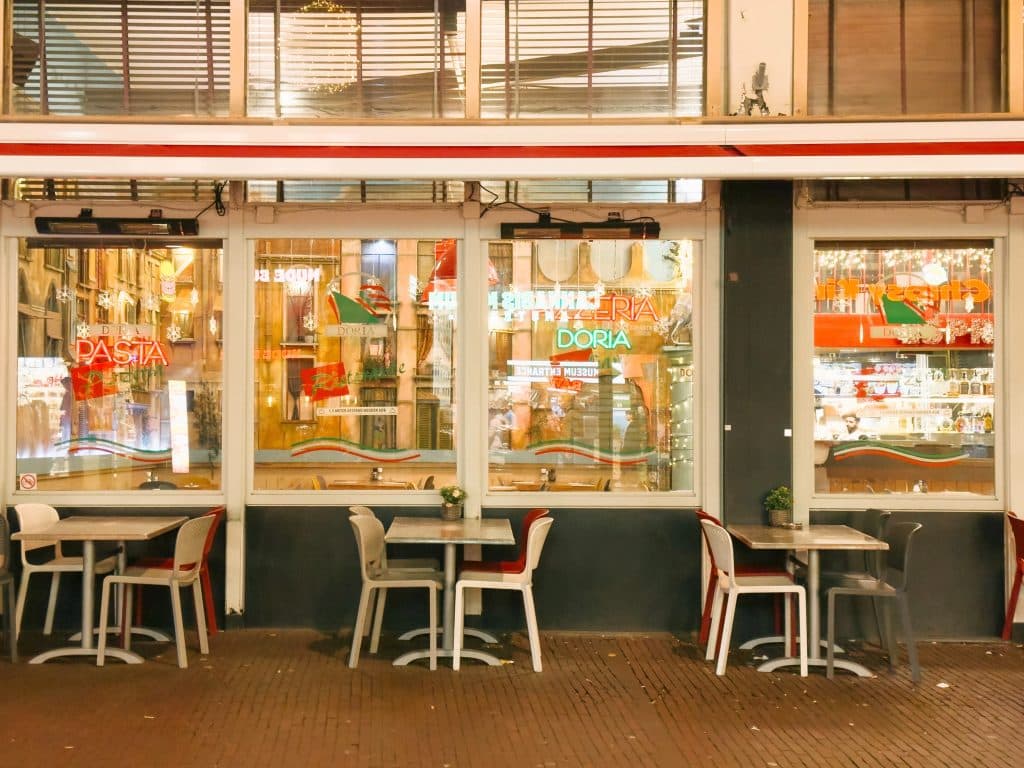Food choices have become a subject of debate in today’s fast-paced world. On one side, we have the convenience and affordability of fast food, and on the other, the ambiance and quality of restaurant dining. The battle between fast food and restaurant dining has divided people into two camps, each defending their preferred choice.
With its quick service and familiar menu options, fast food appeals to those always on the go. It offers convenience and accessibility, making it a popular choice for busy individuals and families. However, critics argue that fast food can be unhealthy and lacking nutritional value.
On the other hand, restaurant dining offers a different experience. From gourmet cuisine to cozy cafes, fine dining establishments allow patrons to savor a delectable meal in a relaxed atmosphere. Critics of restaurant dining argue that it can be expensive and time-consuming.
Both fast food and restaurant dining have pros and cons, but ultimately, the choice depends on personal preferences, lifestyle, and dietary goals. In this article, we will delve deeper into the pros and cons of both options to help you make an informed decision about where to get your next meal.
Keywords: fast food, restaurant dining, pros and cons
Pros of fast food dining
With its quick service and familiar menu options, fast food appeals to those always on the go. It offers convenience and accessibility, making it a popular choice for busy individuals and families. One of the key advantages of fast food is the speed at which it can be prepared and served. In a world where time is essential, fast-food restaurants provide quick and efficient service.

Another pro of fast food dining is its affordability. With value meals and dollar menus, fast food establishments offer budget-friendly options for those looking to save money. This makes it an attractive choice for students, young professionals, and anyone on a tight budget.
Additionally, fast food chains often have various menu options to cater to different tastes and dietary preferences. Whether you’re in the mood for a classic burger, fries, or a salad, fast food restaurants usually have something for everyone.
Cons of fast food dining
Despite its convenience and affordability, fast food has its downsides. One major con is the lack of nutritional value in many fast food items. Fast food is often high in calories, unhealthy fats, and sodium. Regularly consuming fast food can lead to weight gain, heart problems, and other health issues.

Another drawback is the limited customization options. While fast food chains may have various menu items, there is often less flexibility when customizing your order. This can be problematic for individuals with specific dietary restrictions or preferences.
Fast food dining also has environmental implications. Excessive packaging and waste contribute to plastic pollution and landfill overflow. Additionally, the mass production of fast food ingredients, such as meat, can negatively impact the environment, including deforestation and greenhouse gas emissions.
Pros of restaurant dining
On the other hand, restaurant dining offers a different experience. From gourmet cuisine to cozy cafes, fine dining establishments allow patrons to savor a delectable meal in a relaxed atmosphere. One of the main advantages of restaurant dining is the food quality. Restaurants often use fresh, high-quality ingredients and employ skilled chefs who can create culinary masterpieces.

Restaurant dining also provides a social experience. Whether you’re celebrating a special occasion or enjoying a meal with friends and family, the ambiance and atmosphere of a restaurant can enhance the overall dining experience. The attentive service and attention to detail in restaurants can make you feel pampered and cared for.
Moreover, restaurant dining allows for more customization and personalization. Many restaurants offer a variety of dishes, allowing you to choose based on your preferences and dietary restrictions. This flexibility can be a major advantage for individuals with specific dietary needs or preferences.

Cons of restaurant dining
While restaurant dining offers many benefits, there are also some drawbacks. One of the main cons is the cost. Fine dining establishments can be expensive, especially compared to fast food options. The cost of ingredients, skilled staff, and the overall experience contribute to the higher restaurant prices.
Another potential downside is the time-consuming nature of restaurant dining. From making reservations to waiting for your food to be prepared, dining in a restaurant can take longer than grabbing a quick meal at a fast food outlet. This can be a concern for individuals with busy schedules or limited time.
Also, restaurant dining may not always suit families with young children. The refined atmosphere and longer wait times may not be ideal for restless little ones. Fast food, on the other hand, offers a more casual and child-friendly environment.
Health considerations: fast food vs. restaurant dining
Regarding health considerations, fast food often gets a bad reputation. Fast food items are typically high in calories, saturated fats, and sodium. Regularly consuming fast food can contribute to weight gain, obesity, and an increased risk of chronic diseases such as heart disease and diabetes.

In contrast, restaurant dining can offer healthier options. Many restaurants now provide menu choices that cater to various dietary preferences, including vegetarian, vegan, gluten-free, and low-calorie options. Restaurants often prioritize fresh ingredients and can prepare dishes using healthier cooking methods.
However, it’s important to note that not all restaurant meals are healthy. Some dishes may still contain calories, unhealthy fats, and sodium. Making informed choices and paying attention to portion sizes when dining out is essential.
Cost considerations: fast food vs. restaurant dining
Cost is a significant factor when deciding between fast food and restaurant dining. Fast food is generally more affordable than restaurant meals. With value meals and combo deals, fast food chains provide options for those on a tight budget.
On the other hand, restaurant dining can be more expensive. The cost of ingredients, skilled chefs, and the overall dining experience contribute to higher prices. Fine dining establishments charge a premium for their gourmet offerings and luxurious ambiance.
When deciding where to eat, it’s essential to consider your budget and financial goals. Fast food can be more economical for everyday meals, while restaurant dining can be reserved for special occasions or when you want to treat yourself.
Environmental impact: fast food vs. restaurant dining
The environmental impact of our food choices is an important consideration in today’s world. Fast food dining has a significant environmental footprint. The excessive packaging, single-use plastics, and waste generated by fast food establishments contribute to pollution and landfill overflow. The mass production of fast food ingredients, such as meat, also contributes to deforestation, water pollution, and greenhouse gas emissions.
In comparison, restaurant dining tends to have a smaller environmental impact. Many restaurants prioritize sustainability and use locally sourced ingredients. They may also employ eco-friendly practices, such as recycling and reducing food waste. Fine dining establishments often focus on quality over quantity, resulting in less overall waste.
However, it’s worth noting that not all restaurants prioritize sustainability. Some establishments may still contribute to environmental issues through sourcing practices, waste management, and energy consumption.
Making a choice: factors to consider
Several factors must be considered when deciding between fast food and restaurant dining. Firstly, consider your lifestyle and dietary goals. Fast food can be convenient if you’re always on the go and need quick meals. However, if you prioritize quality, ambiance, and a wider variety of menu options, restaurant dining may be more suitable.
Budget is another crucial factor. Fast food is generally more affordable, making it a practical choice for those on a tight budget. Restaurant dining, however, can be reserved for special occasions or when you’re willing to splurge.
Consider your health goals and dietary preferences. If you’re focused on maintaining a healthy diet, you may find more suitable options in restaurants that prioritize fresh and nutritious ingredients. However, making healthier choices at fast food establishments is still possible by opting for grilled options and salads and avoiding sugary beverages.
Lastly, consider the environmental impact of your food choices. If sustainability is important, restaurants that prioritize locally sourced ingredients and eco-friendly practices may better align with your values.
Conclusion: finding a balance
There is no right or wrong choice in the great food debate between fast food and restaurant dining. Both options have pros and cons; the decision ultimately depends on personal preferences, lifestyle, and dietary goals.
Fast food offers convenience, affordability, and quick service, making it a popular choice for those on the go. However, it can be unhealthy and contribute to environmental issues.
Restaurant dining provides a different experience, with high-quality food, customization options, and a relaxed atmosphere. However, it can be more expensive and time-consuming.
When choosing, consider health considerations, cost, and environmental impact. It’s also important to balance and enjoy both fast and restaurant dining in moderation.
Ultimately, the key is to make informed choices that align with your values and contribute to your overall well-being. So, savor the moment and enjoy your meal, whether grabbing a quick bite or indulging in a fine dining experience. Bon appétit!




